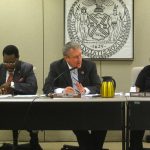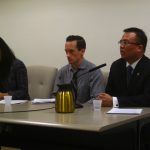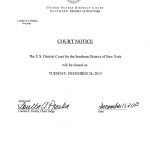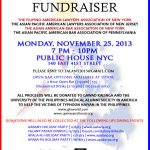A party is required to notify the Court promptly when an action may
be related to an earlier filed action. See Local Rule 1.6. To enable the
court to evaluate the claim of relatedness, the court has designed a
Statement of Relatedness form that a party must fully complete.
A party filing a new action that may be related to an earlier filed
action is required both to file and serve (a) a Civil Cover Sheet (Form
JSC44C) containing a claim of relatedness, and (b) a separate Statement of Relatedness. See Local Rule for Division of Business 13(b)(1).
Go here to read the full Notice to the Bar and to obtain a copy of the form.








